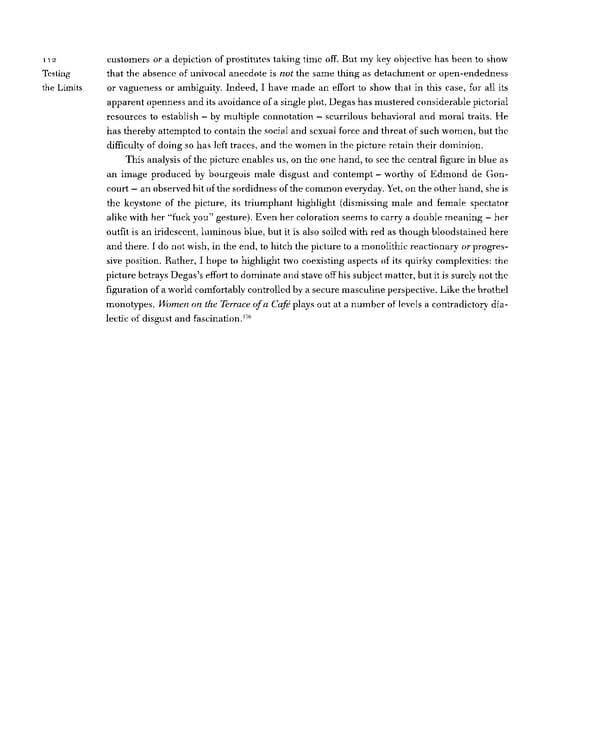112 customers or a depiction of prostitutes taking time off. But my key objective has been to show Testing that the absence of univocal anecdote is not the same thing as detachment or open-endedness the Limits or vagueness or ambiguity. Indeed, I have made an effort to show that in this case, for all its apparent openness and its avoidance of a single plot, Degas has mustered considerable pictorial resources to establish — by multiple connotation — scurrilous behavioral and moral traits. He has thereby attempted to contain the social and sexual force and threat of such women, but the difficulty of doing so has left traces, and the women in the picture retain their dominion. This analysis of the picture enables us, on the one hand, to see the central figure in blue as an image produced by bourgeois male disgust and contempt — worthy of Edmond de Gon- court — an observed bit of the sordidness of the common everyday. Yet, on the other hand, she is the keystone of the picture, its triumphant highlight (dismissing male and female spectator alike with her "fuck you" gesture). Even her coloration seems to carry a double meaning — her outfit is an iridescent, luminous blue, but it is also soiled with red as though bloodstained here and there. I do not wish, in the end, to hitch the picture to a monolithic reactionary or progres- sive position. Rather, I hope to highlight two coexisting aspects of its quirky complexities: the picture betrays Degas's effort to dominate and stave off his subject matter, but it is surely not the figuration of a world comfortably controlled by a secure masculine perspective. Like the brothel monotypes, Women on the Terrace of a Cafe plays out at a number of levels a contradictory dia- 156 lectic of disgust and fascination.
 Prostitution & Impressionists Page 132 Page 134
Prostitution & Impressionists Page 132 Page 134